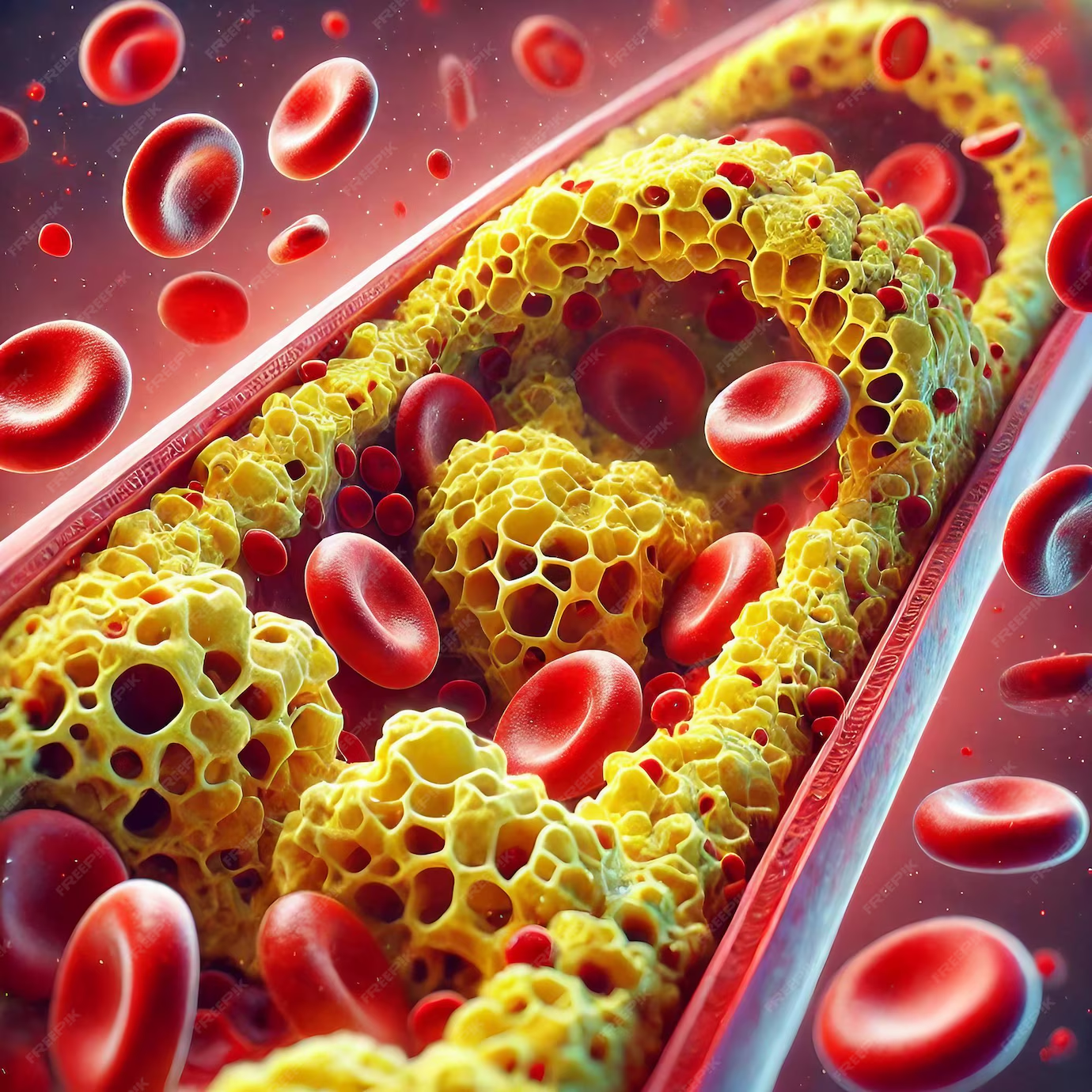High cholesterol is a common health issue, affecting millions worldwide. Often, it sneaks up on people, leading to serious health conditions like heart disease and stroke. But the good news is that with the right dietary and lifestyle changes, managing high cholesterol is entirely possible. As a clinical nutritionist, my approach is centered on empowering individuals to make informed choices that support their health goals.
Understanding Cholesterol
Cholesterol isn’t inherently bad—it’s a vital substance in the body, playing a key role in cell membrane structure, hormone production, and digestion. However, when cholesterol levels get too high, particularly LDL cholesterol (the “bad” cholesterol), it can lead to plaque buildup in the arteries, increasing the risk of cardiovascular diseases.
There are two primary types of cholesterol:
- LDL (Low-Density Lipoprotein): Known as “bad” cholesterol, high levels of LDL can lead to plaque buildup in your arteries and result in heart disease or stroke.
- HDL (High-Density Lipoprotein): This is the “good” cholesterol that helps remove LDL from the bloodstream, transporting it to the liver for excretion.
The goal in managing high cholesterol is to lower LDL levels while maintaining or even increasing HDL levels.
Nutrition’s Role in Cholesterol Management
1. Emphasising Healthy Fats
One of the most important aspects of managing cholesterol is the type of fats consumed. Saturated fats, found in red meat, full-fat dairy products, and processed foods, can increase LDL cholesterol. Trans fats, often found in fried foods and baked goods, are even more harmful, raising LDL and lowering HDL cholesterol.
Instead, focus on:
- Monounsaturated fats: Found in olive oil, avocados, and nuts, these fats can help reduce LDL levels.
- Polyunsaturated fats: Omega-3 and Omega-6 fatty acids, found in fatty fish (like salmon and mackerel), flaxseeds, and walnuts, not only lower LDL but also support overall heart health.
2. Increasing Soluble Fiber Intake
Soluble fiber, found in oats, beans, lentils, fruits, and vegetables, plays a significant role in cholesterol management. It binds to cholesterol in the digestive system, helping to remove it from the body before it can enter the bloodstream.
A daily intake of at least 25-30 grams of fiber is recommended, with a significant portion coming from soluble fiber-rich foods. Incorporating foods like oatmeal for breakfast, beans in salads, and fruits like apples and berries as snacks can make a noticeable difference in cholesterol levels.
3. Choosing Plant Sterols and Stanols
Plant sterols and stanols, naturally occurring substances found in small amounts in many fruits, vegetables, nuts, seeds, and legumes, have been shown to block cholesterol absorption in the intestines. Many fortified foods, such as certain margarines and orange juices, are also good sources.
Consuming 2-3 grams of plant sterols and stanols daily can help lower LDL cholesterol by 10% or more.
4. Limiting Dietary Cholesterol
Although the impact of dietary cholesterol on blood cholesterol levels is less significant than previously believed, it’s still wise to limit intake, especially for individuals sensitive to cholesterol. Foods high in dietary cholesterol include egg yolks, organ meats, and shellfish. Moderation is key, rather than complete elimination.
5. Incorporating Antioxidant-Rich Foods
Oxidised LDL cholesterol is particularly harmful as it can damage the arterial walls, leading to atherosclerosis. Antioxidants, found abundantly in fruits and vegetables, protect LDL from oxidation.
Focus on vibrant, colorful fruits and vegetables like berries, oranges, carrots, spinach, and kale. These foods are rich in vitamins C, E, and other antioxidants that support cardiovascular health.
Lifestyle Factors Beyond Diet
While diet is crucial, lifestyle factors also play a significant role in managing cholesterol.
1. Regular Physical Activity
Exercise helps raise HDL cholesterol while lowering LDL. Aim for at least 150 minutes of moderate-intensity aerobic activity each week, such as brisk walking, swimming, or cycling.
2. Maintaining a Healthy Weight
Excess weight contributes to higher LDL levels and lower HDL levels. Even modest weight loss can improve cholesterol levels, particularly if you lose belly fat, which is closely linked to heart disease risk.
3. Avoiding Smoking and Limiting Alcohol
Smoking lowers HDL cholesterol and damages the arteries, while excessive alcohol intake can raise triglycerides—a type of fat found in the blood. Quitting smoking and moderating alcohol consumption can improve cholesterol levels and overall heart health.
Personalised Nutrition Plans
Cholesterol management is not one-size-fits-all. As a clinical nutritionist, I work with individuals to create personalised nutrition plans tailored to their specific health needs, preferences, and lifestyle. This often includes regular monitoring of cholesterol levels, adjustments to the diet, and addressing any other health conditions that may impact cholesterol, such as diabetes or high blood pressure.
Conclusion
Managing high cholesterol is a lifelong commitment, but with the right guidance and a holistic approach, it’s entirely achievable. By focusing on healthy fats, increasing fiber intake, incorporating plant sterols, and making informed lifestyle choices, individuals can significantly reduce their risk of heart disease and enjoy a healthier life. If you’re struggling with high cholesterol or just want to take proactive steps, consulting with a clinical nutritionist can provide you with the tools and support you need to succeed.







